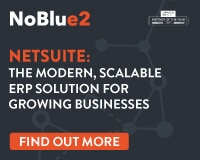 In many organisations, it’s the IT function that ends up taking on the responsibility of business system ownership (BSO)…
In many organisations, it’s the IT function that ends up taking on the responsibility of business system ownership (BSO)…
But that’s not always the best way to maximise the value of the system in the long term.
For a company that has purchased an integrated business system, it’s tempting to rely on the IT team to get things up and running. But therein lies the danger…
A new business system may take months to ‘bed in’. During that period, it’s perfectly acceptable for the in-house technical experts to help sort out any glitches that arise, and to help new users understand how the system operates.
However, once that initial period has passed and the system and its processes have stabilised, it may not be in the company’s best interests for the IT team to be responsible for driving things forward, taking a strategic oversight of the system and making sure that it continues to add value to the business in the longer term.
Sponsoring longer term strategic oversight
That’s because BSO is less about IT and more about strategic planning and risk mitigation: making sure the system is well maintained and developed in the right direction so that it results in business benefits and remains relevant, aligned with the needs of the business, robust and viable.
A business system owner needs to have both influence and plenty of system knowledge. Rhodar Limited’s Finance Director Andy Finn meets both those requirements in full. He is the in-house ‘owner’ of RedSky’s Summit enterprise resource planning (ERP) system. “I’ve taken the lead at Board level for sponsoring the development of the system,” he said.
[irp]
“I’ve tried to emphasise to everyone that Summit is not an accounting system or a stock system or an IT product: it’s a business system and we’ll get the best out of it if we all accept that. We shouldn’t try to ‘shoehorn’ it round our existing business processes – if we have to change our processes so that they become as effective as they can possibly be, then that’s exactly what we should do.”
Measuring benefits
Measurement is another key aspect of BSO – how else can a company be sure that the system is continuing to deliver business benefits?
To make sure the value brought by the system doesn’t start to tail off, important for business system owners to make sure that sufficient funds are made available for secondary activities that will help to keep everything ship-shape – things like a data cleansing exercise, to weed out extraneous or out-of-date documents and data so they don’t clog up the system unnecessarily. Funding will also be needed to ensure that all system users are fully trained and competent in carrying out their daily tasks, and that there is a training manual or some other source of information for them to refer to, as and when additional help is needed.
Adaptation and improvement
Business system owners also play a key role in spotting new ways for the company to get the most out of the software, often by adapting and improving certain business processes so that they work more smoothly and efficiently within the system. They are also responsible for overviewing changes to the system: prioritising proposed amendments according to the benefits they will bring; ensuring there’s enough funding and operational guidelines in place for small changes to be made safely and securely; checking that any significant changes will not have a negative impact on the business before signing them off – this definitely needs to be done before instructing the developers.
Whereas the IT team’s primary responsibility will be to manage technical risks, the task of managing business risks sits squarely on the shoulders of the business system owner, who’ll be responsible for things like the availability, security and integrity of the data, as well as the system’s overall performance. To maintain security on the system, for example, a business system owner may set rules within the system that restrict the access of certain users to particular fields.
Compliance
Another key responsibility of the business system owner is to make sure the business complies with relevant legislation, such as GDPR, in terms of what is kept on the system and for how long. Data integrity also falls within their remit – the idea being to preserve the data and protect it from being adjusted or deleted by an incompetent or negligent employee.
[irp]
And that’s not all, because it’s also the duty of the business system owner to make sure that the IT team has a good understanding of how the system supports the various business processes that keep the company running efficiently. In the event of a crisis situation arising on the system, the buck stops with the business system owner – it’s down to them to investigate what has happened, why the issue has occurred and what needs to be done to resolve it.
Part and parcel of system introduction
For a company that has just purchased an integrated system, BSO should be part and parcel of the introduction of the new software: once the system has bedded in and users are up and running with their everyday tasks on the system, the IT technical support team usually takes a step back so that the business system owner can step up to the plate and take on responsibility. However, for a company that’s new to the concept of BSO and has a range of legacy systems in place, the introduction of BSO is likely to be an uphill and very costly struggle.
RedSky has specialised in providing cost-effective, durable IT solutions to the UK and Irish construction industry for 40 years. We know how to help construction companies work smarter, to drive up performance. Our flagship software – Summit – covers operational, commercial, finance and project management. We know it’s unique because we developed it ourselves – and having one development environment gives us a big advantage, of course, because we can make sure that all our modules are fully integrated.





